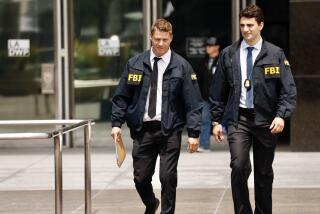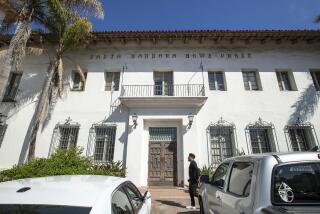Lawyers soak up Tribune cash flow
- Share via
Reporting from Chicago — U.S. Bankruptcy Court Judge Kevin Carey isn’t likely to win any awards for reining in runaway bankruptcy fees. But he took a stab at it.
Carey was the jurist in Delaware who last year warned lawyers in the Tribune Co. case that they had better think twice about charging more than $1,000 an hour.
Chicago’s Sidley Austin, the lead debtor’s attorney, filed a top rate of $925. New York’s Chadbourne & Parke, which represents unsecured creditors, charged $955.
Both firms have done pretty well anyway.
In the 15 months since the Chicago media conglomerate filed for bankruptcy, law firms and other professionals have billed Tribune $138 million, or about one-quarter of the company’s cash flow last year, an analysis of court documents shows.
Sidley’s take alone is pushing $25 million, and the case is far from over.
As big as those numbers are, experts agree, the spending is hardly unusual.
Major cases in recent years -- such as Enron ($793 million), United Airlines ($296 million) and Delphi (just under $400 million) -- have been colossally expensive. And the monstrous Lehman Bros. case, now underway in New York, will dwarf all of those.
After just 17 months Lehman has generated fees of $457 million, and that jumps to more than $700 million if management fees earned by restructuring specialist Alvarez & Marsal are included.
With the exception of Carey’s early flash of concern, neither he nor the U.S. Bankruptcy Trustee overseeing fees in the Tribune case have blinked at the millions of dollars flowing to lawyers each month. Stuart Maue, the St. Louis firm hired to examine fee applications, has challenged a tiny sliver of billings so far, and its own $812,642 in fees are almost triple the $265,869 in savings it has found.
The only serious challenge to the Tribune fees has come from junior bondholders. They are contesting an out-of-court agreement under which Tribune paid $25 million to cover professional fees incurred in just the first 10 months of the case by the banks that provided the financing for the company’s failed 2007 leveraged buyout.
For the law firms, attention tends to focus on those eye-popping top rates pulled down by a handful of partners such as lead attorneys James Conlan of Sidley (who recently got a raise to $950) and Howard Seife of Chadbourne (now at $965).
But the real cost stems from the army of professionals deployed. More than 160 people at Sidley have spent the equivalent of 4.6 years on the Tribune case at an average rate of about $500 an hour.
Sidley’s Conlan acknowledges that the costs are high but says they are market rate. The complexity of the case, he said, demands wide and diversified legal resources.
Nevertheless, some costs are hard to fathom. Sidley has spent $110,000 making copies. The top four professional firms in the case have billed a total of $1.2 million just to cover the cost of preparing those bills.
Don Liebentritt, chief legal officer at Tribune, which owns the Los Angeles Times and KTLA-TV Channel 5, said he has little choice but to pay up.
“Would we like it to be less expensive?” Liebentritt asked. “Sure. But you need to retain the best people possible to do what you need to do. . . . What I have to pay is determined by the market.”
Many bankruptcy experts connect the rising costs to the fact that cases have become infinitely more complex since the federal Bankruptcy Reform Act of 1978 gave corporate managers the ability to design their own restructurings and negotiate solutions with creditors.
Early on, the process was relatively orderly. But the increasing sophistication of financial markets and corporate financial structures has turned the system on its head, said Douglas Baird, a restructuring scholar at the University of Chicago Law School.
The end result is an aggressive street fight -- litigation on steroids, some practitioners call it -- with a new breed of professional creditor matching wits against others to see who can carve out the most value from the estate. Each side has its own set of lawyers, investment bankers, consultants and accountants.
The cost of fighting in court can be seen plainly in Sidley’s Tribune billings. For the first eight months of the case, Sidley spent $1.3 million on litigation-related issues. But after the case began to focus on charges by junior bondholders that the 2007 leveraged buyout offer was improper, litigation fees jumped to $4.2 million over the next five months.
As corporate restructuring grew more complex, Bankruptcy Court became a magnet for the sort of highly paid gladiators who flocked to mergers during the 1980s. Big firms built major practices, creating scarcity value by offering services smaller firms couldn’t match.
In Chicago, that has paid dividends as firms like Sidley, Kirkland & Ellis and Skadden carved out major national franchises rivaling New York for big cases.
“Bankruptcy has become an elite practice,” Baird said. “There’s a superstar phenomenon like in all professions.”
More to Read
The biggest entertainment stories
Get our big stories about Hollywood, film, television, music, arts, culture and more right in your inbox as soon as they publish.
You may occasionally receive promotional content from the Los Angeles Times.










